A £65 million contract has been awarded to build the UK’s first three Protector drones.
Protector is the world’s first certified Remotely Piloted Air System (RPAS), enabling it to fly in busy, unsegregated airspace, including civilian airspace, thanks to its ground-breaking ‘detect and avoid’ technology.
Defence Secretary Ben Wallace said:
“The UK is proving once again that we are a world leader in defence technology. Protector will provide the RAF with vast global reach, meeting the UK’s defence and security needs for decades to come, and provides another increase to the unmanned inventory for the Armed Forces. This aircraft will upgrade a whole range of lethal capabilities allowing us to control, protect and manage the battlespace from the air for hours on end.”
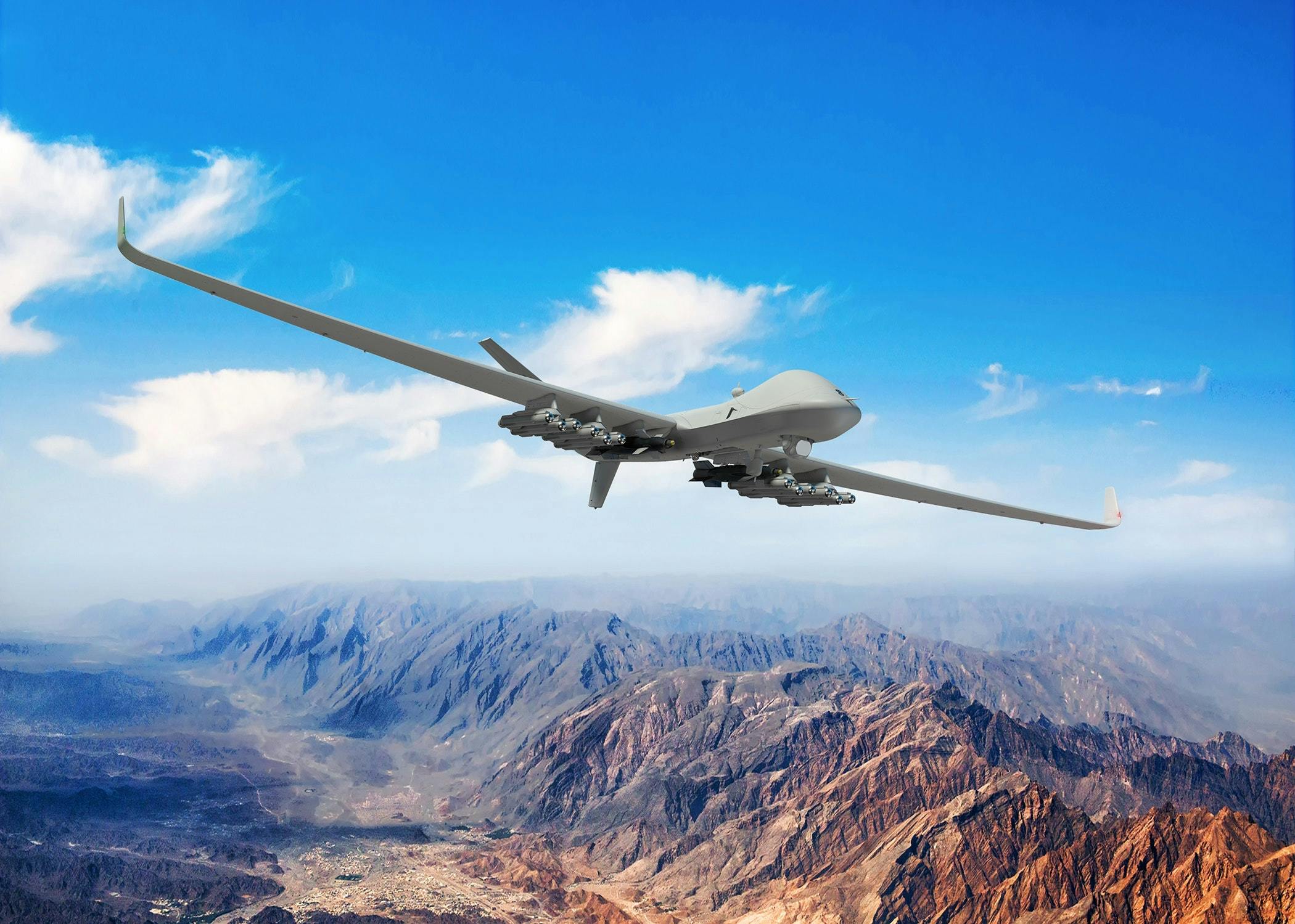
According to the Ministry of Defence:
“Its ability to fly consistently for up to 40 hours will offer the RAF vastly improved armed intelligence and reconnaissance sorties. The innovative fleet will also have advanced anti-icing and lightning protection, providing the RAF with unprecedented flexibility to operate in extreme weather conditions. Protector also comes with enhanced data links and will carry next-generation, low collateral, precision strike weapons – the UK-made Brimstone missile (MBDA) and Paveway IV Laser Guided Bomb (Raytheon UK).”
The contract follows the development phase by manufacturers General Atomics Aeronautical Systems which will build the first three Protector aircraft, plus three ground control stations and other associated support equipment. It also includes an option to build 13 more aircraft and four ground control stations, which will complete the current planned fleet of 16 aircraft, more than doubling the capability currently provided by Reaper.



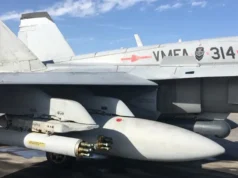

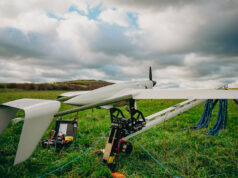
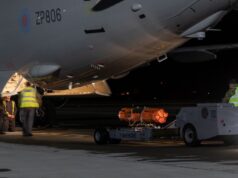
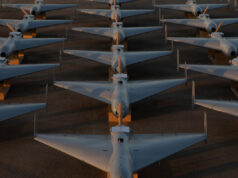
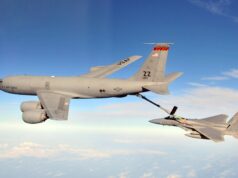
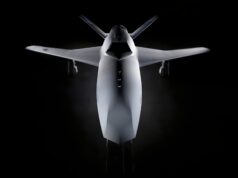

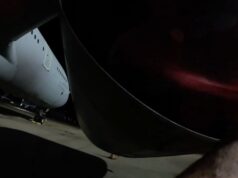
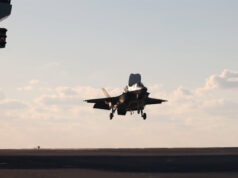

Will we ever get to a fleet of 20? Having said that these things scare the pants off me.
Hmm, wasn’t it 20 we were supposed to be buying, replacing 10 reapers? Doubling our numbers.. 40 hours is long, but couldn’t we have a refuelling/supply Drone to refuel these drones meaning they could stay on mission for a week or far longer? Just a thought.
Why bother? Send another one up to relieve the one on station and have it return for refuel and overhaul.
Keep it simple and straight forward. There is less to go wrong and you are not messing around with expensive refuelling drones or modifications.
I was just thinking of longer range and time on mission, but if there’s bases are close by then fair enough. I would love to see a drone that can operate for weeks on station, and surely they don’t need an overhaul every 40hrs.
That would just be a waste of money, that could be spent on another couple of Protectors. These aircraft might not be as sexy as a Typhoon or F35, but will be hugely capable bits of kit, that will also work alongside side our P8’s and P7’s.
I was wondering about that Robert. Do they have any utility in the maritime domain if UK based and working with P8?
I believe so, they could be very useful for SAR operations with a 40hr endurance, as well as sub hunting/surveillance ?
Agree. Never seen one as the buggers are always in the Middle East. Hopefully they are based in the UK one day.
I think these will be stationed at Waddington. Seen a Reaper up close, they are much bigger then they look in pictures, the wing span is huge.
Looking at Protector vs Reaper, this looks bigger still.
Waddington the obvious choice being the ISTAR hub. I would have put them in Kinloss myself.
Great idea, kinloss it is then, all agreed. We just need to get the squadies out of there first, I know a few mingers I could tempt them with in foress.
one of the reasons Reaper doesn’t fly in UK airspace is because it can’t for safety reasons (hence ME or USA.) Protector I think can, so you are likely to see them at Waddington.
On the contrary these things are sexy, I think more so as they can do real damage Anywhere and you wouldn’t Evenknow they are there. Scary in a way, if I was a terrorist in the Middle East I would be crapping my pants every night going to sleep…knowing Ahmed and Mohammad Were blown to bits by a silent stalker/killer the other night..
Ok ok it’s a stupid idea having a refueling drone!
Is the image accurate then? 12 Brimstone per drone? Pretty good offensive capability really.
Protector can employ 18 Brimstone. 3 hardpoints per wing, with the inner ones able to mount a single Paveway IV. So either 18 Brimstone or 12 Brimstone and 2 Paveway IV.
Is it correct that the UK is the first customer for this varient. Is there any specific UK equipment or is it all US. Very capable assets and low cost bomb trucks. Is there any information on their survivability vs a Typhoon or F35 or does they only work well in uncontested airspace. I’m assuming brimstone has sufficient range to avoid most manpads and short range sams.
I too was mulling their use. It’s one thing using them in uncontested airspace, which perhaps may be their standard mode of operation going forwards. I would like to understand more around their survivability in contested airspace, Vs over the horizon weapons and in the maritime domain
The US Air Force gave a stop order to General Dynamics to stop producing the MQ-9 for the Air Force in February of this year and didn’t request funds for the purchase of any more Predators in its 2021 FY budget request since it believes that the MQ-9 is not survivable on a future battlefield. It is currently studying what needs to replace it.
Congress has concerns about that decision and a House committee included funds to purchase more Predators. The Senate will have its say. Congress will probably vote to buy more but it’s clear that the USAF doesn’t want them. Won’t be the first time this has happened.
The USAF has the RQ180 waiting, or maybe already entering service.
Light years ahead of Predator, Reaper, and Protector too.
The RQ180 is a strictly reconnaissance drone. It carries no weapons.
Probably 0 survivability in contested air space. MANPADS, fighters, etc… would easily dispatch these drones. Even Global Hawk which flies at much higher altitude was easy target for Iranians not so long ago.
Luckily ISIS etc… have no AA capability, so these drones are still relevant.
Different beasts but they do the job of a fast jet bomb truck for certain circumstances. We tend to forget that when complaining about the number of fast jet squadrons. 16 of these makes another 2 squadrons.
I should work in the Govt ‘spin’ dept……
On a related topic.
Soon HMS QE will carry out trials with unmanned drone swarms and loyal wingman. I know that these are to be developed for the future, i didn’t realize that these concepts had actually progressed to flying prototypes to undergo tests. Thought we were still some years away.
https://www.janes.com/defence-news/news-detail/raf-to-trial-unmanned-aircraft-from-royal-navy-carriers
Very interesting, especially.. “.. the UK was looking to create a carrier-capable unmanned aircraft as part of its wider efforts to develop the Tempest next-generation combat aircraft.“
Yes, CAS has already mentioned that we will fly Loyal Wingman type UAV from our carriers.
Something to tell DC. Sorry old man, need the carriers to launch YOUR drones.
Does this mean they’d be some sort of STOVL drone? Or is the QE long enough for conventional take off/landing?
Will be interesting to see what happens. Maybe will help make up for lack of additional F35?
I would hope so, can’t have all this tonnage and only put 12 jets on it. Even if the drones are purely reconnaissance/AEW centered.
I would hope so, can’t have all this tonnage and only put 12 jets on it. Even if the drones are purely reconnaissance/AEW focused.
What sort of RCS do these things have ? Looking at the shape I would imagine its quite small. Survivability today is not really about speed altitude or defensive suits, its more about not being seen in the first place. Modern air to air or surface to air missiles are pretty lethal. If it has a small RCS it could be used not only in contested airspace but as a first strike system against ground based SAM’s. A lot better than sending in a very expensive F35 with an even more expensive human being inside.
That said all those missiles hanging off the wings probably light it up quite clearly on a radar. The next stage of development for these platforms seems fairly obvious. Internal weapons bays. stealth coatings and in the not too distant future AI targeting.
Watched a documentary last night about “robot killers” and it was truly frightening, these platforms are a lot closer to reality than most people think, and the development work being done seems to have an almost unlimited budget !
You could easily see these being used as bait to bring up the opposing air force……
The good thing about drones being a fraction of the price of fighter aircraft is that you can lose some without a major issue. Israel used UAVs as far back as the 90s as cannon fodder to identify Sam sites.
Taranis has a weapons bay and is certainly far more stealthy so actually an already flying platform. A product based on Taranis is likely to be part of the Tempest program with a post-2030 capability.
A supersonic Taranis would make a fantastic reconnaissance aircraft with a strike capability for non permissive environments. One with the rolls royce lift fan could also augment our carrier capability.
I have wondered whether the Taranis could be scaled up to make a medium sized deep strike bomber for highly protected airspace? It is a capability we just dont have, and an area that all the big powers are investing heavily in. Whilst I’m not suggesting we should be looking at a large fleet of heavy bombers, those days are gone, a couple of squadrons of XL tarainis with a reasonable weapons load out without a pilot being put at risk would be a useful capability to have and increase our non nuclear deterrent level.
My concern with Tempest, whilst I am a big supporter of us doing stuff our selves again and investing in high tech industries, is that I cannot see us needing manned platforms by the 2040s in large numbers. Unmanned drones offer the capability to field higher numbers of cheaper assets, and scalable designs for different specialist tasks. They can also be brought into service in less time and money, and designs can be refreshed more easily without the pilot safety factor. Shorter airframe lifespan would reduce cost and allow regular updates that keep capabilities relevant each decade.
I would like to see the follow approx force structure by the next decade or two:
Carriers: 24 f35b each if they are both to be forward based as per latest stories.
Small atrittiable swarming drone/loyal wingmen to augment the F35s (project mosquito)
12 Vtol Taranis type Ucav with longrange for reconnaissance and high risk sorties. A few of these could then be tasked in the refuelling role for the F35.
Ground based forces:
Tempest – high mach manned design that offers a new dimension to fighting. High mach will ensure the platform is relevant and offers capabilities most other nations will not have. Also offers something extra and different to the market and may secure good foreign sales.
XL taranis medium bomber with high stealth x 2 squadrons. Again sales potential.
Large loyal wingman to augment the Tempest or operate in groups independently. Longrange and small weapons payload or EW capable. Used for air combat role, think Aussie Boeing offer.
Small swarming drones with loyal wingman ability (project mosquito) with built in warheads, ground or air launched built in high numbers, reusable, but attritable when required.
Cheap bombtruck Uav for high persistence permissive environments ie Protector. Stand up 2 new squadrons for maritime surveillance and sub hunting to work alongside P8’s.
When considering what aircraft results from Tempest I would focus on what is THE most important conventional deterrent IMV; an ability to rapidly degrade a state of the art Integrated Air Defence System. Destroy or significantly degrade an adversaries IADS and we leave their heavy weaponry and logistics tail exposed to air attack. This is critical in the case of Russia since its IADS already covers large swaths of the Baltic States, Poland and Northern Norway before the ground equipment even leaves Russian territory. We don’t want to have to defend under that umbrella if we can avoid it. So to deter potential Russian adventures, threaten to counter with an ability to respond in force on minimum notice (I’d argue a response in hours rather than days), without having to forward deploy large numbers of aircraft and avoiding having to refuel large numbers of aircraft with tankers relatively close to the conflict.
So with that goal, I would see Tempest aiming to deliver an optionally manned, Mach 2 and supercruise capable, twin engine, long range platform with a large weapon bay. Perhaps something with specs close to those estimated for the Chengdu J-20 combat range, i.e. 2,000 km combat range that would enable missions direct from the UK to well beyond the Baltic States’ borders with Russia, or to Murmansk, without re-fueling. So a larger aircraft for the large fuel load and for the large weapons bay to enable larger numbers of low cost swarming munitions, decoys and EW but not a bomber per se. The aircraft might use data from Taranis as well as the BAES Magma project to develop more of a flying wing approach, improving all aspect radar stealth but also focused on reducing all aspect IR and audio signatures.
Note though, that while creating multiple new large platforms, manned or unmanned, that costs will skyrocket if we cannot find volume markets. Consequently we will not see “Base Tempest” plus your “VTOL Tempest” and “XL Tempest Bomber” concepts, the latter are unaffordable.
A robot using AI to select and prosecute targets is truly frightening….if you totally take the human out of the loop or the human IN the loop is overwhelmed with workload across other drones
Spot the spin:
“ the current planned fleet of 16 aircraft, more than doubling the capability currently provided by Reaper.”
We have 10 Reapers, currently. (Data taken from the government published data)
I teach Philosophy not mathematics, but more than doubling current fleet would be 20+ not up to 16.
Am I missing the point?
Will be need to scrap reaper when protectors comes into service. I know protector will be approved to fly through congestered airspace but reaper can still serve as a platform until it is shot down I presume.
Yes, they are referring to capability. It’s good.
There seem to be three figures for the potential fleet, 16, 20 and 26 according to Janes reporting.
https://www.janes.com/defence-news/news-detail/uk-signs-for-first-three-protector-uavs
You can get your whole salary on the fact that it will be the smallest number!!
Then we will get into a conflict and have to do a rush purchase as we did with the Reapers we have now.
Well you may be correct. But the appeal of these platforms to bean counters is that they are a significantly lower cost alternative to purchase and operate, versus putting flight hours on Typhoons or F35s that need a very expensive and rare commodity in the form of the pilot. With their endurance they can be far more persistent in permissive environments too.
We should keep their Reapers and send a flight of the to The Falklands to do the ‘patrol’ element of protecting our South Atlantic assets.
Reaper/Protector doesn’t have a Maritime radar and EO/IR isn’t a suitable area search sensor. GA have flown podded radars slung beneath MQ9s though so conversions could be done?
We don’t have 10 Reapers…
1 has been written off. And another is ‘awaiting repair’, but is likely never to fly again. Another was lost in 2008, but an additional one was ordered. In total we’ve had 11 MQ-9.
But right now we’re down to 8.
Personally I think we should buy either 30 Protectors or keep our current 10 Reapers in addition to the planned 20 Protectors.
It beats having to use Typhoons for CAS missions, wearing out their airframes. I worry that our 140-ish Typhoons will be down to around 80 or so by the time Tempest enters service, because the airframes will be knackered.
More cheap drones like Protector could stop that.
We don’t have 10 Reapers any more. 2 have sustained severe damage and will never fly again. We’re down to 8.
Pretty much proves my point further, then; no depth to defence, no way to replace losses.
If an enemy targets satellites. Will these things still be able to operate?